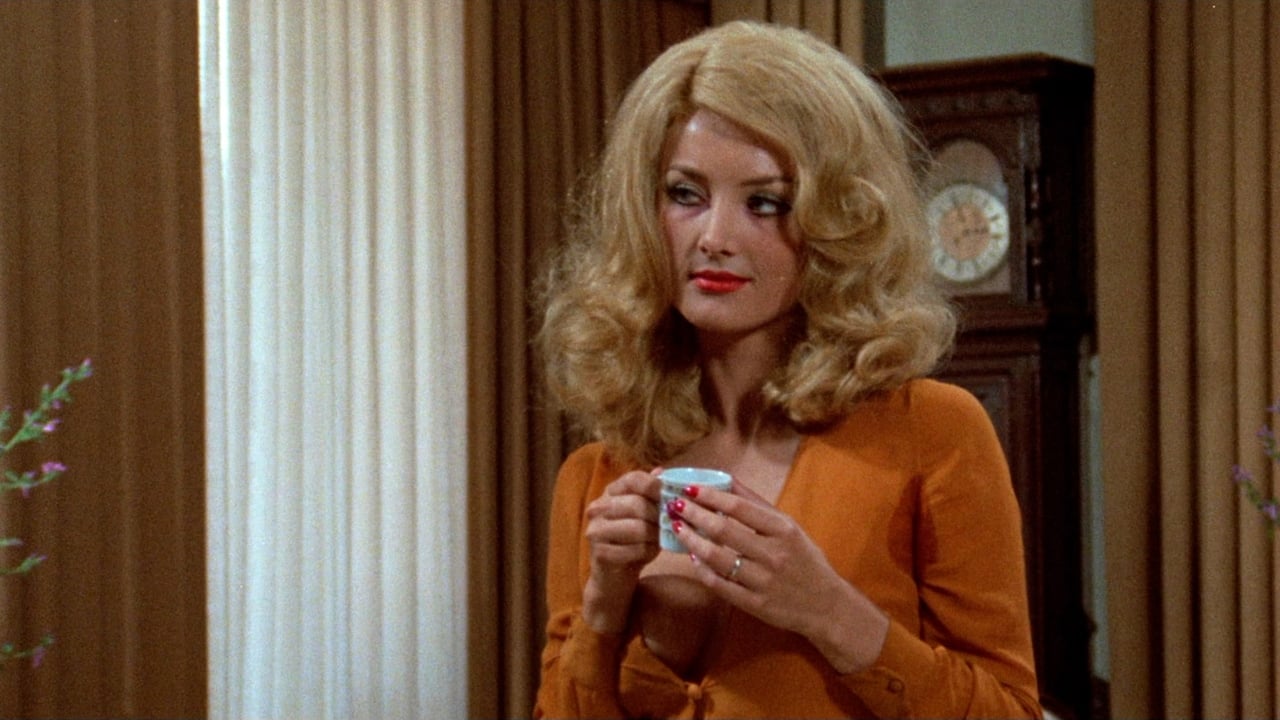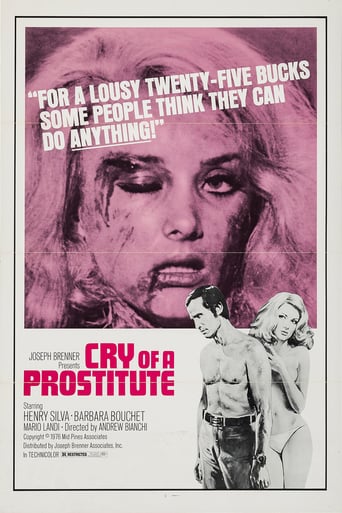Infamousta
brilliant actors, brilliant editing
Borgarkeri
A bit overrated, but still an amazing film
Leoni Haney
Yes, absolutely, there is fun to be had, as well as many, many things to go boom, all amid an atmospheric urban jungle.
Ezmae Chang
This is a small, humorous movie in some ways, but it has a huge heart. What a nice experience.
Bezenby
Who'd have thought that the guy who made Strip Nude For Your Killer and Burial Ground would produce one of the best Euro-crime films ever made? That said, if ever a genre needed someone that didn't hold back, it's this one.The film basically starts as it means to go on. When a car crashes on the French/Italian border causing three fatalities (including the decapitation of the driver) it becomes apparent that the child on board had been dead for several days before hand. Even more horrifying is the discover that the child's body cavity had been used for transporting heroin. The police are astonished at what they find, and even the mafia are revulsed at how low one of their own is willing to stoop, and set out to put a stop to it and restore their already dodgy reputation.Enter Mafia hitman Henry Silva, sent by one particular Don to Sicily to sort everyone out. Henry is a cold blooded killer who likes to whistle a creepy tune before putting a bullet through everyone's head, and quickly aligns himself with Don Scannapieco, the seemingly 'better' of the two Mafia gangs in the area. Then again, he also aligns himself with the other Don, who is prime suspect for the old child-stuffing racket. A Fistful of Dollars type scenario then arises as Henry plays the two gangs off each other, with over the top violent results.Of course, there's a few other characters to take note of. Scannapieco's daughter is having a Romeo and Juliet type relationship with the other Don's son, which complicates matters (and hints at a possible positive outcome), Scannpieco's youngest son is a mentally-handicapped cripple who is a burden to his father, and strangest of all is the other Don's girlfriend, the totally messed up Barbara Bouchet, who threatens to claim that Henry raped her if he doesn't make love to her, which he does...up her wrong 'un. That scene alone will make or break those not used to this kind of madness.The violence escalates as the film progresses, with some jaw-dropping gun battles. People are shot in the face with shotguns, Henry makes really sure two hitmen are dead by running them over with a steamroller, and Don Scannapieco's wife is so overcome with grief at the murder of one of her sons that she forces a hitman's corpse through a bandsaw head first. No one is safe in this film and even Henry can barely speak during the finale due to taking a severe beating and being thrown off a cliff. Bianchi even throws in a little mystery as the cock-sure Henry starts breaking down a bit and suffering from flashbacks to the murder of a woman by a mystery person. This all comes to a head in a blood-splattered ending in a film that never lets up for the entire duration. This is one seriously-trashy film made even better by Henry Silva's terrifying stare. Result!Oh, and if you've ever wondered what Barbara Bouchet would look like bathing in milk, this is the film for you.
jadavix
"Cry of a Prostitute" is a typically boring and colourless poliziotteschi flick, perhaps only notable for its (also fairly typical) attitude toward women, who get slapped around a lot. One even has her face shoved in a hog's guts as punishment for trying to seduce the manly hero.I didn't pay close enough attention to work out the plot. It is impossible to pay close attention to 99% of poliziotteschi flicks because they are so boring and badly structured. You want to pay attention but then you're faced with a stretch of film about as exciting as staring at a wall for half an hour.There are, of course, some violent moments: the movie opens with a ridiculous car crash-decapitation scene, with what looks like a mannequin's head falling out of a car window. There's also an autopsy scene where a dead body has stitches in the chest which are cut open, revealing canisters of heroin.Anyway, main man Henry Silva, one of my all-time favourite actors, is a mafia don from the US who comes to Italy to investigate the situation. Once he's there, the other don's slutty wife immediately starts coming on to him, so Silva sticks her face in hog guts, and in another scene, slaps her down and attacks her with a belt. That'll show her!The only other woman in the movie I remember gets similar treatment.I remember reading that, unlike The Godfather, Italian mafia movies show the criminals for what they are: scum. There's no honour among them because the Italians had first hand experience of this type of scumbag and knew they were exactly that: human garbage.This is not true of "Cry of a Prostitute". You are obviously positioned to think that Silva is the "hero" of the story, despite his appalling treatment of women. In the end he is clearly positioned as the better man among his criminal cohorts, which is weird. He's a woman abusing criminal scumbag, after all?
t_atzmueller
The "respectable society" in Sicily isn't amused: drug-dealers have begun to use children's corpses, stuffing the bodies with heroin which they smuggle across the French-Italian border; this practice being in non-compliance with the mafia's code of honour, they suspect two rivalling Mafia clans – one being the family of local mafia boss Don Cascemi, the other by exiled Italian-American Mafiosi Ricuzzo. Not wanting to get their 'good' names involved, the mafia hires Tony Aniante, a hired hit man who has learned his trade in the US. Tony infiltrates the fighting families and, using both physical violence and psychological warfare, he get's both families to wipe each other out while at the same time settling an old score of his own.Don't make the mistake to confuse American mafia films like "The Godfather", "Goodfellas" or even "The Sopranos" to the ultra-violent subgenre of Poliziottesco; apart from the topic of organized crime, both really have very little in common. In the Americanized versions, the Mafiosi are invariable shows as corrupted yet often charismatic, honourable even amiable at times; you won't find an amiable character throughout the entire film. There's no Tony Soprano, no Sonny or Vincent Corleone, there's only Tony Aniante – and if you find any redeeming elements in this 'protagonist', well, you might consider seeking out medical advice.Henry Silva as Aniante is impressive: eyes like burning coal, features reminding us of some carrion animal, that could only be replicated with the use of special-effect (if they wouldn't happen to be Silvas features already). At first Aniante comes across like a tough guy who might harbour some decency within him (for example, in the scene where he saves the handicapped grandson of one of the clan-heads from assassination). About halfway through the film, we realize that he's nothing more than a ruthless, ice-cold psychopath, left traumatized by a violent childhood and a pathological hate for women. He rapes, beats and kills with such glee and passion, one doesn't know whether to be scared or repulsed by Aniante, who's not above crushing the bodies of two opponents whom he's just killed, with a steamroller. His form of romance consists of slamming a lonely woman unto a slaughtered cow, sodomizing her and beating her to a bloody pulp. Need I mention who becomes the new godfather of Sicily at the end of the movie? The topic 'trauma' runs through the entire film, not just through the disturbed characters but by showing us a deeply traumatized society, were everybody has their share of scares, caused by generational violence and bloodshed. "Queli che contano" doesn't show us that beautiful, jolly south of Italy, where the people do nothing else but sing, dance and drink Chianti; it shows us a barren land, scorched by the sun, where sweat-drenched shirts are a way of life and even the buildings speak of decay and degeneration.If "Queli che contano" has a message, it is that there is no "respectable society" within the mafia – just corrupted souls, ruthless criminals and even the most honourable Mafioso is still a thug, a murderer and a thief. It may well be the last movie that a Mafioso may want to see – and in case this should be my last review, please tell my wife that I love her and keep searching that bay for a guy standing inside a concrete block.Despite all the sleaze and exploitation, it's very powerful, even an authentic film that's certainly not easy to enjoy (unless you're a complete sadist), but it might well be a cure for people who tend to idolize the mafia, cossa nostra, camorra or any other organized crime organisations. I'd give it seven from ten.
jrd_73
Andrea Bianchi the director of the gory zombie film Burial Ground and the sleazy giallo Strip Nude for Your Killer turns his subtle (ha ha) hand to the Italian crime film with Cry of the Prostitute. It's Yojimbo time! The feuding between two warring families in rural Italy has become so fierce that the heat is coming down on the big families in Rome. Henry Silva is a gun for hire sent in to stop the fighting. He does this by playing the two gangsters against each other, offering his services to first one and then the other. Bianchi provides more gore than expected for the genre but none of it is overly convincing: a fake severed head, a band-saw mishap, and a dead child that looks, well, like a mannequin (and the camera lingers over it!). The adorable Barbara Bouchet appears playing a washed up former prostitute who has turned to drink. She wears heavy make-up and looks less than flattering. Nonetheless, I was glad to have her. Silva was fine as well. There isn't much here to praise and technically the film is less assured than many others in the genre. Fans might like it more than I did though.

